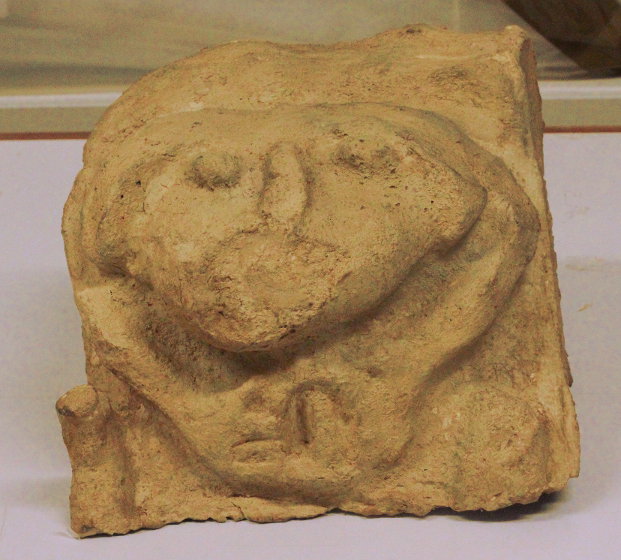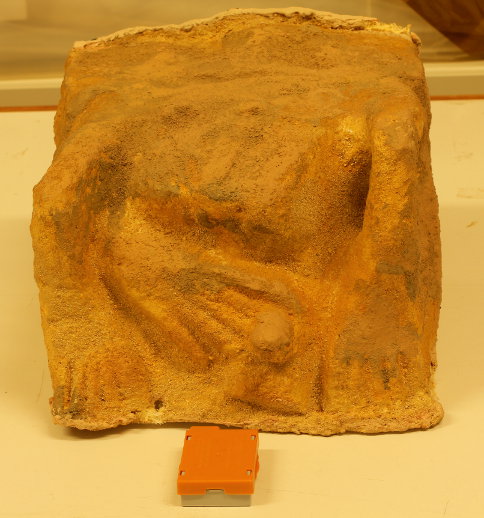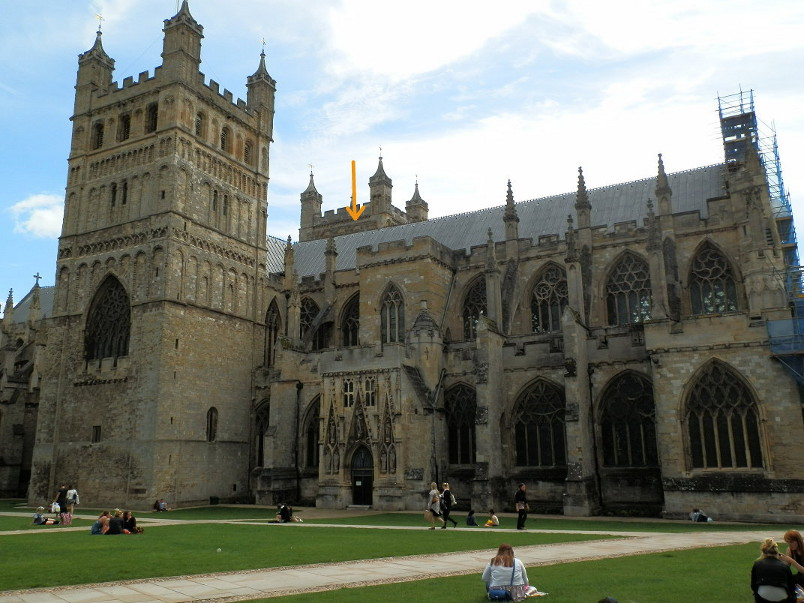Contents

History
In 1050 Edward the Confessor, unhappy with the relatively obscure location of the See of Devon and Cornwall moved it from Crediton in Devon
to the more important location of Exeter. After the Norman conquest the second Norman bishop Warelwast, a nephew of William the Conqueror started construction of a new cathedral between 1112-1114. Construction continued throughout the 12th century with small hiatus caused by a fire during the civil war between Stephen and Matilda. It is to this Romanesque phase of building that unusual two towers of Exeter and the sheela na gig figures belong.
The figures
The figures can be found on the north side of the south tower. They are extremely hard to see with the naked eye and can only be found with some sort of maginification. The best place to view the figures is by standing at the back of the large green outside the cathedral to the right of north tower. You have to look at the corbels on the face of the far tower over the roof the cathedral. The fact that the corbels are only around foot wide combined with the angle and distance at which they are viewed really does mean that you will need binoculars or a long lens on your camera. The in situ photos below were taken with a 1000mm lens. The figures consist of a definite female figure, a definite male figure and a slightly ambiguous figure which on the balance of probabilities is likely to be female.
All of the figures are crudely carved and now very worn, but even taking into account their current state even when new the figures would have been crude. This is curious as other figures while still not of the highest quality are better carved than the exhibitionists.
One of the more likely theories to explain exhibitionist figures is that they served a didactic purpose warning against sins of the flesh. Given that they they are nigh invisible from the ground a didactic purpose seems unlikely. What of the apotropaic theory as protection against evil? Again this seems unlikely as an explanation as the location does not readlily fit in with the theory. Unlike Oxford the figures are not over a gateway or facing outward, in fact the figures face inward towards the cathedral rather than outwards protecting against external evil. Despite being in plain view the figures are to all intents and purposes hidden. Could this mean that they are “pagan” survivals secretly hidden among the Christian carvings? Again this is unlikely, though crude the figures are similar to other romanesque carvings which are always found in a Christian context.
It is hard to ascribe any meaning to these carvings other than decoration like the rest of the corbels on the cathedral.
Thanks go to Thomas Cadbury for allowing me to visit the museum stores to photograph the casts.
The museum is not currently displaying the figures but is well worth a visit anyway
http://www.rammuseum.org.uk/collections/local-history http://www.rammtimetrail.org.uk/
Fibreglass cast images used with permission Thomas Cadbury of Exeter Museum


